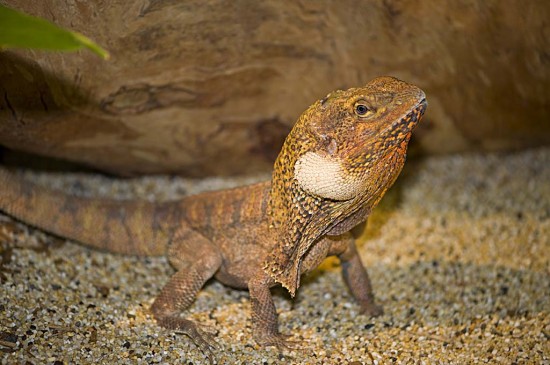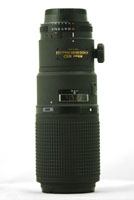
The auto focus version of this lens is quite a lot bigger than its older brother manual version. It is heavier and physically bigger, however the biggest benefit is the superb optical quality of this lens. In the area of image quality it leaves little to be desired.
I have used this lens on both a Nikon D2H and the D700 where it is a superb lens.
The auto focus action of this lens is quite slow, as are most of the Nikon Micro lenses, but auto focus would rarely be used when this lens is used for close up images where it excells. The lens has a focus limit switch to limit the focus to the full range or just to normal distances.
The lens will focus down to life size at a repreduction ration of 1:1.
This lens is a great general purpose all round lens, however when used at infinity for landscapes, where it is also very sharp, it is best to use an aperture of around f/11 for sharpness. For general photography apertures of f/4.0 to f/11 can be used with good sharpness.
The 200mm Micro lens has a rotating switch to change from manual to automatic focus.
The closest focus distance of the lens is 0.5 metres (1.6 feet).
The lens has a switch for presetting the focus range. This can be set to longer distance or close up, there are two switch positions. The FULL position covers the full focussing range and the limit position covers two focusing limit zones, approximately 0.7 metres (2.25 feet) to infinity for normal shooting and approximately 0.7 metres (2.25 feet) to 0.5 metres (1.6 feet) for shooting at a close distance.
I have found to get optimum sharpness it is best to use a monopod or tripod to steady this lens/camera outfit. The lens has a built in tripod collar to facilitate this.
The 200mm Micro lens is 200mm when focussed at infinity, however as it is focussed at its closest distance the focal length of the lens reduces to around 140mm. The lens will also pass the effective aperture to the camera, not the actual aperture. When focussed at a reproduction ration of 1:1 the effective aperture passed to the camera will be f/5.3 not the actual specified aperture of f/4. When focussed between infinity and a reproduction ratio of 1:1 the effective aperture will be between f/4 and f/5.3. This phenomenon is a fact of physics and not a shortcoming of the lens.
The AF Micro, Nikkor, ED, 200mm, f/4, D, IF, lens provides such exceptionally high image magnification that even the slightest movement during shooting can cause a blurred image. So be sure to use a tripod and a cable release or remote cord to steady the camera when releasing the shuttter.
At high reproduction ratios used when close-up, the depth of field is very shallow. To ensure great depth of field, stop down the lens, then position the camera to ensure the most important surface of the subject is in the same zone of sharp focus.
This lens can be quite difficult to get used to using it.
The 200mm Micro lens is a great general purpose 200mm telephoto lens, but is superb for close up photography of shy insects such as butterflies or other small creatures such as the frilled lizard above, as it has a greater working distance than other comparable 60mm or 105mm Micro lenses.
It will be difficult to find a lens sharper and more usefull than tthe 200mm Micro lens.
Lens Specifications
- Closest working distance 260mm
- 2 ED glass elements for better performance
- Internal focussing, lens does not extend during focussing
- f/4.0 to f/32 f-stop range
- Filter attachment 62mm
- Weight 1190g
- Dimensions 76 x 193mm.

This lens is highly recommended as both a general purpose lens and as a close up macro lens and we recommend B & H Photo Video as an on line store to purchase your lens. Purchase your Nikon Digital SLR Lenses here at B&H Photo Video.
There are many other posts on this site with images taken with the Nikon 200mm f/4 Micro lens as follows:
Nikkor, Nikon Micro (Macro) Lenses
High Speed Electronic Flash Synchronization (Flash At Any Shutter Speed

2 comments
Comments are closed.